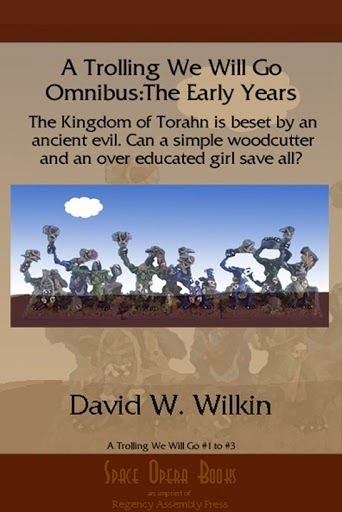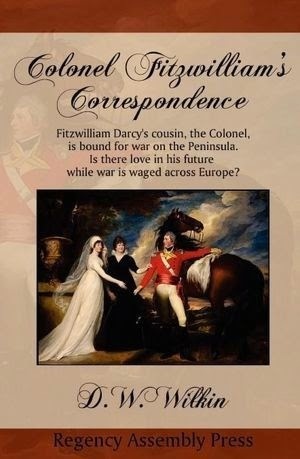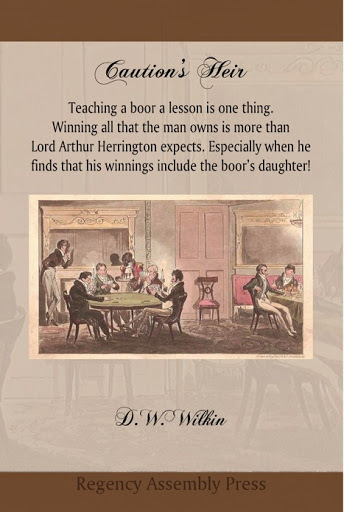D.W. Wilkin's Blog, page 183
September 10, 2014
If All the World Were Paper releases its first Game Guide-An Unofficial Guide to how to win the Scenarios of Rollercoaster Tycoon 3
An Unofficial Guide to how to win the Scenarios of Rollercoaster Tycoon 3
I have been a fan of this series of computer games since early in its release of the very first game. That game was done by one programmer, Chris Sawyer, and it was the first I recall of an internet hit. Websites were put up in dedication to this game where people showed off their creations, based on real amusement parks. These sites were funded by individuals, an expense that was not necessarily as cheap then as it is now. Nor as easy to program then as it might be to build a web page now.
Prima Books released game guides for each iteration of the game, Rollercoaster Tycoon 1, Rollercoaster Tycoon 2 and Rollercoaster Tycoon 3 (RCT3) but not for the expansion sets. And unlike the first two works, the third guide was riddle with incorrect solutions. As I played the game that frustrated me. And I took to the forums that Atari, the game publisher hosted to see if I could find a way to solve those scenarios that the Prima Guide had written up in error. Not finding any good advice, I created my own for the scenarios that the “Official” Guide had gotten wrong.
Solutions that if you followed my advice you would win the scenario and move on. But if you followed the
“Official” version you would fail and not be able to complete the game. My style and format being different than the folks at Prima, I continued for all the Scenarios that they had gotten right as well, though my solutions cut to the chase and got you to the winner’s circle more quickly, more directly.
My contributions to the “Official” Forum, got me a place as a playtester for both expansions to the game, Soaked and Wild. And for each of these games, I wrote the guides during the play testing phase so all the play testers could solve the scenarios, and then once again after the official release to make changes in the formula in case our aiding to perfect the game had changed matters. For this, Atari and Frontier (the actual programmers of the game) placed me within the game itself.
And for the longest time, these have been free at the “Official” Forums, as well as my own website dedicated to the game. But a short time ago, I noticed that Atari, after one of its bankruptcies had deleted their forums. So now I am releasing the Guide for one and all. I have added new material and it is near 100 pages, just for the first of the three games. It is available for the Kindle at present for $2.99.
(Click on the picture to purchase)
Not only are all 18 Scenarios covered, but there are sections covering every Cheat Code, Custom Scenery, the famous Small Park Competition, the Advanced Fireworks Editor, the Flying Camera Route Editor which are all the techniques every amusement park designer needs to make a fantastic park in Rollercoaster Tycoon 3.


Regency Personalities Series-Stephen Rumbold Lushington
Regency Personalities Series
In my attempts to provide us with the details of the Regency, today I continue with one of the many period notables.
Stephen Rumbold Lushington
6 May 1776 – 5 Aug 1868
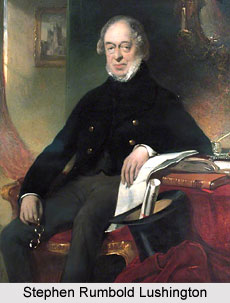
Stephen Rumbold Lushington Lushington was born on 6 May 1776 in Godmersham, Kent. He successfully completed his education from the Rugby School in the town of Rugby, Warwickshire, England. In the year 1792, Lushington went to British India and initially worked as a translator.
Lushington contested the borough of Canterbury at the general election in England in the year 1807, but remained unsuccessful. Later he was elected as a Member of Parliament (MP) for the borough of Rye in Sussex, at an uncontested by-election. Lushington was returned without a contest for Canterbury at the 1812 general election. He held the seat until the general election in 1830. He also served as the Secretary to the Treasury from the year 1814 to 1827. Lushington again contested at the 1835 general election and he held the seat until he stood down in the year 1837.
Lushington was designated as the Governor of Madras Province on 18 October 1827 and succeeded Major General Sir Thomas Munro, 1st Baronet KCB. But as Thomas Munro died even before the culmination of his tenure, Henry Sullivan Graeme served as the Acting Governor in interim until Lushington arrived in Madras (now Chennai). The Madras Presidency, also known as the Presidency of Fort St. George and Madras Province, was an administrative sub division of British dominated India. The territory included most of southern India, such as the modern states of Tamil Nadu, the Coastal Andhra and Rayalaseema regions of Andhra Pradesh, Lakshadweep Islands, the Malabar region of North Kerala, Koraput, Malkangiri, Nabarangapur and Gajapati districts of southern Orissa and the Bellary, Ganjam, Dakshina Kannada, Rayagada and Udupi districts of Karnataka.
During his tenure as the Governor of Madras Presidency, the Madras Club was established in the year 1832. Lushington served in office until 25 October 1832 and was succeeded by General Sir Frederick Adam GCB GCMG.
Lushington wrote and published the book The Life and Services of General Lord Harris, G. C. B. The literary work was a biography of his father-in-law, George Harris, 1st Baron Harris. He owned Norton Court in Norton, Kent, where he knew Jane Austen, and founded nearby schools Lushington died on 5 August 1868.


A Trolling we Will Go Omnibus: The first three Fantasy stories of Humphrey and Gwendolyn
A Trolling We Will Go Omnibus:The Early Years Not only do I write Regency and Romance, but I also have delved into Fantasy.
The Trolling series, (the first three are in print) is the story of a man, Humphrey. We meet him as he has left youth and become a man with a man’s responsibilities.
We follow him in a series of stories that encompass the stages of life. We see him when he starts his family, when he has older sons and the father son dynamic is tested.
We see him when his children begin to marry and have children, and at the end of his life when those he has loved, and those who were his friends proceed him over the threshold into death.
All this while he serves a kingdom troubled by monsters. Troubles that he and his friends will learn to deal with and rectify.
Here are the first three books together as one longer novel.
A Trolling We Will Go, Trolling Down to Old Mah Wee and Trolling’s Pass and Present.
Available in a variety of formats.
For $6.99 you can get this fantasy adventure.
Barnes and Noble for your Nook
The stories of Humphrey and Gwendolyn. Published separately in: A Trolling we Will Go, Trolling Down to Old Mah Wee and Trollings Pass and Present.
These are the tales of how a simple Woodcutter and an overly educated girl help save the kingdom without a king from an ancient evil. Long forgotten is the way to fight the Trolls.
Beasts that breed faster than rabbits it seems, and when they decide to migrate to the lands of humans, their seeming invulnerability spell doom for all in the kingdom of Torahn. Not only Torahn but all the human kingdoms that border the great mountains that divide the continent.
Feedback
If you have any commentary, thoughts, ideas about the book (especially if you buy it, read it and like it ;-) then we would love to hear from you.


September 9, 2014
Regency Personalities Series-Thomas Bruce 7th Earl of Elgin
Regency Personalities Series
In my attempts to provide us with the details of the Regency, today I continue with one of the many period notables.
Thomas Bruce 7th Earl of Elgin
20 July 1766 – 14 November 1841
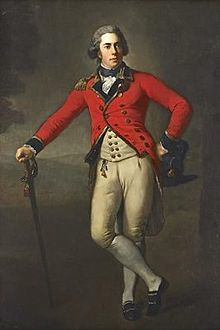
Thomas Bruce
Elgin was born in Broomhall, Fife, the second son of Charles Bruce, 5th Earl of Elgin and his wife Martha Whyte. He succeeded his older brother William Robert, the 6th Earl, in 1771 while he was only five. He entered the army as an ensign in the 3rd Guards. He was elected as a Scottish Representative Peer in 1790, remaining one until 1807. In 1791, he was sent as a temporary envoy-extraordinary to Austria, while Sir Robert Keith was ill. He was then sent as envoy-extraordinary in Brussels until the conquest of the Austrian Netherlands by France. After spending time in Britain, he was sent as envoy-extraordinary to Prussia in 1795.
On 11 March 1799, shortly before setting off to serve as ambassador at Constantinople, Elgin married Mary, daughter and heir of William Hamilton Nisbet, of Dirleton;
Elgin was ambassador to the Ottoman Empire between 1799 and 1803; he showed considerable skill and energy in fulfilling a difficult mission, the extension of British influence during the conflict between the Ottoman Empire and France.
Acting on the advice of Sir William Hamilton, he procured at his own expense the services of the Neapolitan painter, Lusieri, and of several skilful draughtsmen and modellers. These artists were despatched to Athens in the summer of 1800, and were principally employed in making drawings of the ancient monuments, though very limited facilities were given them by the authorities. About the middle of the summer of 1801, however, all obstacles were overcome, and Elgin received a firman, from the Porte which allowed his lordship’s agents not only to ‘fix scaffolding round the ancient Temple of the Idols [the Parthenon], and to mould the ornamental sculpture and visible figures thereon in plaster and gypsum,’ but also ‘to take away any pieces of stone with old inscriptions or figures thereon.’
The actual removal of ancient marbles from Athens formed no part of Elgin’s original plan, but the constant injuries suffered by the sculptures of the Parthenon and other monuments at the hands of the Turks induced him to undertake it. The collection thus formed by operations at Athens, and by explorations in other parts of Greece, and now known by the name of the ‘Elgin Marbles,’ consists of portions of the frieze, metopes, and pedimental sculptures of the Parthenon, as well as of sculptured slabs from the Athenian temple of Nike Apteros, and of various antiquities from Attica and other districts of Hellas.
Part of the Elgin collection was prepared for embarkation for England in 1803, considerable difficulties having to be encountered at every stage of its transit. Elgin’s vessel, the Mentor, was unfortunately wrecked near Cerigo with its cargo of marbles, and it was not till after the labours of three years, and the expenditure of a large sum of money, that the marbles were successfully recovered by the divers. On Elgin’s departure from Turkey in 1803, he withdrew all his artists from Athens with the exception of Lusieri, who remained to direct the excavations which were still carried on, though on a much reduced scale. Additions continued to be made to the Elgin collections, and as late as 1812, eighty fresh cases of antiquities arrived in England.
The removal of about 1/2 of the frieze metopes, frieze and pedimental sculpture was a decision taken on the spot by Philip Hunt, Elgin’s chaplain (and temporary private secretary, i.e. representative, in Athens), who persuaded the voivode (governor of Athens) to interpret the terms of the firman very broadly. Lord Elgin bribed local Ottoman authorities into permitting the removal of about half of the Parthenon frieze, fifteen metopes, and seventeen pedimental fragments, in addition to a caryatid and a column from the Erechtheion. He used these antiquities to decorate his mansion in Scotland and then later sold them to the British Museum in an attempt to repay his escalating debt.
On the recommendation of a parliamentary committee, which also vindicated Elgin’s conduct, the “Marbles” were bought by Great Britain in 1816 for £35,000, considerably below their cost to Elgin (estimated at £75,000), and deposited in the British Museum, where they remain.
Elgin, who had been ‘detained’ in France after the rupture of the peace of Amiens, returned to Britain in 1806. Finding that he could not get the British Museum to pay what he was asking for the marbles, Elgin sued his wife’s lover for an appropriately high sum. He divorced Mary, for adultery, by legal actions in 1807 and 1808 in the English and Scottish courts—and by act of parliament—which caused much public scandal. Then, on 21 September 1810, he married Elizabeth (1790–1860), youngest daughter of James Townsend Oswald of Dunnikier. Elgin moved to the European continent.
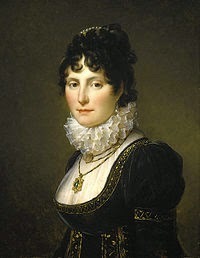
Mary, Countess of Elgin
Elgin married twice. On 11 March 1799, he married Mary (1778–1855), only child of William Hamilton Nisbet, of Dirleton; They had a son and three daughters:
George Charles Constantine (1800–1840), died unmarried, known by the courtesy title of Lord Bruce.
Mary, married on 28 January 1828, Robert Dundas
Matilda-Harrie, married on 14 October 1839, John Maxwell son of Sir John Maxwell, 7th Baronet
Lucy, married on 14 March 1828, John Grant of Kilgraston.
After their marriage ended in divorce Mary later married Robert Ferguson of Raith (1777–1846) who had been cited in the divorce. Elgin, on 21 September 1810, married Elizabeth (1790–1860), youngest daughter of James Townsend Oswald of Dunnikier. They had four sons and three daughters, including:
James Bruce, who became governor-in-chief of British North America and viceroy of India and successor to the Earldom.
Robert Bruce (1813–1862), who became a Lieutenant-Colonel in the Grenadier Guards, married Katherine-Mary (d 1869), 2nd daughter of Sir Michael Shaw-Stewart, 6th Baronet.
Sir Frederick Wright-Bruce (1814), who became a diplomat
Thomas Charles Bruce (1825), who became MP for Portsmouth
Charlotte-Christian, married on 1 July 1850, to Frederick Locker, grandson of Rear-Admiral Sir Edward Locker
Augusta-Frederica-Elizabeth, lady in waiting to Queen Victoria, and married to Arthur Stanley, who became Dean of Westminster.
Frances-Anne.
Elgin died, on 4 November 1841, aged 75, in Paris.


A Jane Austen Sequel: Colonel Fitzwilliam’s Correspondence
Colonel Fitzwilliam’s Correspondence For your enjoyment, one of the Regency Romances I published.
It is available for sale and I hope that you will take the opportunity to order your copy.
For yourself or as a gift. It is now available in a variety of formats.
For just a few dollars this Regency Romance can be yours for your eReaders or physically in Trade Paperback.
Visit the dedicated Website
Barnes and Noble for your Nook or in Paperback
Amazon for your Kindle or in Trade Paperback
Witnessing his cousin marry for love and not money, as he felt destined to do, Colonel Fitzwilliam refused to himself to be jealous. He did not expect his acquaintance with the Bennet Clan to change that.
Catherine Bennet, often called Kitty, had not given a great deal of thought to how her life might change with her sisters Elizabeth and Jane becoming wed to rich and connected men. Certainly meeting Darcy’s handsome cousin, a Colonel, did not affect her.
But one had to admit that the connections of the Bingleys and Darcys were quite advantageous. All sorts of men desired introductions now that she had such wealthy new brothers.
Kitty knew that Lydia may have thought herself fortunate when she had married Wickham, the first Bennet daughter to wed. Kitty, though, knew that true fortune had come to her. She just wasn’t sure how best to apply herself.
Feedback
If you have any commentary, thoughts, ideas about the book (especially if you buy it, read it and like it ;-) then we would love to hear from you.


September 8, 2014
Regency Personalities Series-Lord William Bentinck
Regency Personalities Series
In my attempts to provide us with the details of the Regency, today I continue with one of the many period notables.
Lord William Bentinck
14 September 1774 – 17 June 1839
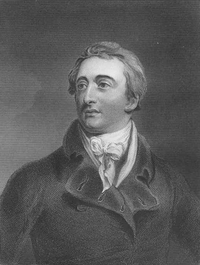
William Bentinck
Lord William Bentinck was the second son of Prime Minister William Cavendish-Bentinck, 3rd Duke of Portland, and Lady Dorothy, daughter of William Cavendish, 4th Duke of Devonshire.
Bentinck joined the Coldstream Guards in 1791, rising to the rank of Lieutenant-Colonel. In 1803 he was, to some surprise, appointed Governor of Madras. Although his tenure was moderately successful, it was brought to an end by a mutiny at Vellore in 1806, prompted by Bentinck’s order that the native troops be forbidden to wear their traditional attire. Only after serious violence was order restored and the offending policy rescinded, and Bentinck was recalled in 1807.
After service in the Peninsular War, Bentinck was appointed commander of British troops in Sicily. A Whig, Bentinck used this position to meddle in internal Sicilian affairs, effecting the withdrawal from government of Ferdinand I of the Two Sicilies in favour of his son, Francis I of the Two Sicilies, the reactionary Queen’s disgrace, and an attempt to devise a constitutional government for the troubled island, all of which ultimately ended in failure. In 1814, Bentinck landed with British and Sicilian troops at Genoa, and commenced to make liberal proclamations of a new order in Italy which embarrassed the British government (which intended to give much of Italy to Austria), and led, once again, to his recall in 1815.
As conditions in Sicily began to deteriorate at the beginning of the 19th century, England began worrying about its interests in the Mediterranean. Internal dissensions in the Sicilian government and an ever increasing suspicion that Queen Maria Carolina was in correspondence with the French Occupation of Sicily as its object led to the appointment of Bentinck as British representative to the Court of Palermo in July 1811. At the beginning of his time at the head of Sicilian affairs, politicians in London opposed the Bourbon rule and appealed for Sicilian annexation. Bentinck was sympathetic to the cause and plight of the Sicilians and “was quickly convinced of the need for Britain to intervene in Sicilian affairs, not so much for Britain’s sake as for the well-being of the Sicilians.” He was also one of the first of the dreamers to see a vision of a unified Italy. The English, however, were content to support the Bourbons if they were willing to give the Sicilians more governmental control and a greater respect of their rights. Bentinck saw this as the perfect opportunity to insert his ideas of a Sicilian constitution. Opposition to the establishment of a constitution continued to surface, Maria Carolina proving to be one of the toughest. Her relationship with Bentinck can be summed up in the nickname that she gave him: “La bestia feroce” or the ferocious beast. Bentinck, however, was determined to see the establishment of a Sicilian Constitution and shortly thereafter exiled Maria Carolina from Palermo. On 18 June 1812 the Parliament assembled in Palermo and, about a month later, on 20 July 1812 the constitution was accepted and written on the basis of 15 articles. With the establishment of the constitution the Sicilians had now gained an autonomy they had never experienced before. The constitution set up the separation of the legislative and executive powers and abolished the feudalistic practices that had been established and recognized for the past 700 years.
Bentinck’s success in establishing a Sicilian constitution lasted only a few years. On 8 December 1816, a year after Ferdinand IV returned to the throne of the Kingdom of the Two Sicilies, the constitution was abolished and Sicily was reunited with Naples. The constitutional experiment was deemed a failure although it cannot be said to be his alone. The Sicilian nobles were inexperienced and in the face of the difficulties of 1814 and 1815 could not sustain a constitution without British support, which was withdrawn in the wake of the end of the Napoleonic wars. The British no longer had an invested interest in the internal affairs of Sicily now that the threat of French invasion had been removed. The establishment of a Sicilian constitution that was facilitated by Bentinck was not to be soon forgotten. The ideas found therein and the small taste of freedom lingered in the memories of the Sicilians and had an influence on the desire for autonomy that was at the base of the Sicilian revolutions of 1820 and 1848.
On his return to England, Bentinck served in the House of Commons for some years before being appointed Governor-General of Bengal in 1828. His principal concern was to turn around the loss-making Honourable East India Company, in order to ensure that its charter would be renewed by the British government.
Bentinck engaged in an extensive range of cost-cutting measures, earning the lasting enmity of many military men whose wages were cut. Although his financial management of India was quite impressive, his modernizing projects also included a policy of westernization, influenced by the Utilitarianism of Jeremy Bentham and James Mill, which was more controversial. Reforming the court system, he made English, rather than Persian, the language of the higher courts and encouraged western-style education for Indians in order to provide more educated Indians for service in the British bureaucracy.
Bentinck also took steps to suppress suttee, the death of a widow on her husband’s funeral pyre, and other cruel social customs prevalent in the society during that time, with the help of Raja Ram Mohan Roy who was not only a social reformer but also known as “Maker of Modern India” or “Father of Modern India”. The “superstitious practices” Rammohan Roy objected included suttee’ caste rigidity, polygamy and child marriages and Lord Bentinck helped him to enforce the law. Although his reforms met little resistance among native Indians at the time, it has been argued that they brought on dissatisfaction which ultimately led to the great mutiny of 1857. His reputation for ruthless financial efficiency and disregard for Indian culture led to the much-repeated story that he had once planned to demolish the Taj Mahal and sell off the marble. According to Bentinck’s biographer John Rosselli, the story arose from Bentinck’s fund-raising sale of discarded marble from Agra Fort and of the metal from the Great Agra Gun, the largest cannon ever cast, a historical artifact which dated to the reign of Akbar the Great.
Bentinck returned to the UK in 1835, refusing a peerage, and again entered the House of Commons as a Member for Glasgow.
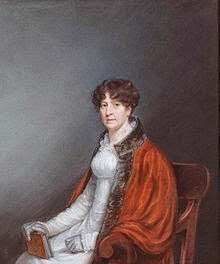
Lady William Cavendish-Bentinck
Bentinck married Lady Mary, daughter of Arthur Acheson, 1st Earl of Gosford, in 1803. The marriage was childless. He died in Paris on 17 June 1839, aged 64. Mary died in May 1843. The department of Manuscripts and Special Collections, The University of Nottingham holds the personal papers and correspondence of Lord William Bentinck (Pw J), as part of the Portland (Welbeck) Collection.
The Charter Act of 1833 was passed during the time of Lord William Bentinck. Accordingly monopoly of the company was abolished. Governor-General in Bengal became the governor-general of India. This Act added a law member to the executive council of the governor-general.The Bishops of Bombay.Madras and Calcutta were to be appointed for the benefit of the Christians in India.


Caution’s Heir from Regency Assembly Press-Now available everywhere!
Caution’s Heir is now available at all our internet retailers and also in physical form as well
The Trade Paperback version is now available for purchase here @ $15.99 (but as of this writing, it looks like Amazon has still discounted it 10%)
Caution’s Heir is also available digitally for $4.99 @ the iBookstore, Amazon, Barnes and Noble, Kobo and Smashwords.
The image for the cover is a Cruikshank, A Game of Whist; Tom & Jerry among the ‘Swell Broad Coves.’ Tom and Jerry was a very popular series of stories at the time.
Teaching a boor a lesson is one thing.
Winning all that the man owns is more than Lord Arthur Herrington expects. Especially when he finds that his winnings include the boor’s daughter!
The Duke of Northampshire spent fortunes in his youth. The reality of which his son, Arthur the Earl of Daventry, learns all too well when sent off to school with nothing in his pocket. Learning to fill that pocket leads him on a road to frugality and his becoming a sober man of Town. A sober but very much respected member of the Ton.
Lady Louisa Booth did not have much hope for her father, known in the country for his profligate ways. Yet when the man inherited her gallant uncle’s title and wealth, she hoped he would reform. Alas, that was not to be the case.
When she learned everything was lost, including her beloved home, she made it her purpose to ensure that Lord Arthur was not indifferent to her plight. An unmarried young woman cast adrift in society without a protector. A role that Arthur never thought to be cast as. A role he had little idea if he could rise to such occasion. Yet would Louisa find Arthur to be that one true benefactor? Would Arthur make this obligation something more? Would a game of chance lead to love?
Today, the iBookstore is added, HERE
Get for your Kindle, Here
In Trade Paperback, Here
Digitally from Smashwords, Here
For your Sony Kobo, Here
Or for your Nook, Here
From our tale:
Chapter One
St. Oswald’s church was bleak, yet beautiful all in one breath. 13th century arches that soared a tad more than twenty feet above the nave provided a sense of grandeur, permanence and gravitas. These prevailed within, while the turret-topped tower without, once visible for miles around now vied with mature trees to gain the eye of passers-by.
On sunny days stain-glass windows, paid for by a Plantagenet Baron who lived four hundred years before and now only remembered because of this gift, cast charming rainbow beams across the inner sanctum. And on grey overcast days ghostly shadows danced along the aisle.
As per the custom of parish churches the first three pews were set-aside for the gentry. On this day the second pew, behind the seat reserved for the Marquess of Hroek, who hadn’t attended since the passing of his son and heir, was Louisa Booth his niece and her companion Mrs Bottomworth.
Mrs Bottomworth was a stocky matron on the good side of fifty. Barely on the good side of fifty. But one would not say that was an unfortunate thing for she wore her years well and kept her charge free of trouble. Mrs Bottomworth’s charge was an only child, who would still have been in the schoolroom excepting the fact of the death of her mother some years earlier. This had aged the girl quickly, and made her hostess to her father’s household. The Honourable Hector Booth, third son of the previous Marquess, maintained a modest house on his income of 300 pounds. That was quite a nice sum for just the man and one daughter, with but five servants. They lived in a small, two floor house with four rooms. It should be noted that this of course left two bedchambers that were not inhabited by family members. As the Honourable Mr Booth saved his excess pounds for certain small vices that confined themselves with drink and the occasional wager on a horse, these two rooms were seldom opened.
Mrs Bottomworth had thought to make use of one of the empty rooms when she took up her position, but the Honourable Hector Booth advised and instructed her to share his daughter’s room. For the last four years this is what she had done. When two such as these shared a room, it was natural that they would either become best of friends, or resent each other entirely. Happily the former occurred as Louisa was in need of a confidant to fill the void left in her mother’s absence, and Mrs Bottomworth had a similar void as her two daughters had grown and gone on to make their own lives.
The Honourable Mr Booth took little effort in concerning himself with such matters as he was ever about his brother’s house, or ensconced in a comfortable seat at either the local tavern or the Inn. If those locations had felt he was too warm for them, he would make a circuit of what friends and acquaintances he had in the county. The Honourable Mr Booth would spend an hour or two with a neighbour discussing dogs or hunters, neither of which he could afford to keep, though he did borrow a fine mount of his brother to ride to the hunt. The Marquess took little notice, having reduced his view of the world by degrees when first his beloved younger brother who was of an age between the surviving Honourable Mr Booth had perished shortly after the Marquess’ marriage. Their brother had fallen in the tropics of a fever. Then the Marquess had lost his second child, a little girl in her infancy, his wife but a few years after, and most recently his son and heir to the wars with Napoleon.
This caused the Honourable Mr Booth to be heir to Hroek, a situation that had occurred after he had lost his own wife. With that tragedy, Mr Booth had found more time to make friends with all sorts of new bottles, though not to a degree that it was considered remarkable beyond a polite word. Mr Booth was not a drunkard. He was confronting his grief with a sociability that was acceptable in the county.
Louisa, however, was cast further adrift. No father to turn to. No uncle who had been the patriarch of the family her entire life. And certainly now no feminine examples to follow but her companion and governess, Mrs Bottomworth. That Mrs Bottomworth was an excellent choice for the task was more due to acts of the Marquess, still able to think clearly at the time she was employed, than to the Honourable Mr Booth. Mr Booth was amenable to any suggestion of his elder brother for that man controlled his purse, and as Mr Booth was consumed with grief, while the Marquess had adapted to various causes of grief prior to the final straw of his heir’s death, the Marquess of Hroek clearly saw a solution to what was a problem.
Now in her pew, where once as a young girl she had been surrounded by her cousins, parents, uncles and aunt, she sat alone except for her best of friends. Louisa was full of life in her pew, her cheeks a shade of pink that contrasted with auburn hair, which glistened as sunlight that flowed though the coloured panes of glass touched it from beneath her bonnet. Blue eyes shown over a small straight nose, her teeth were straight, though two incisors were ever so slightly bigger than one would attribute to a gallery beauty painted by Sir Thomas Lawrence.
She was four inches taller than five feet, so rather tall for a young woman, but her genes bred true, and many a girl of the aristocracy was slightly taller than those women who were of humbler origins. Her back was straight and for an observant man, of which there were some few in the county, her figure might be discussed. The wrath though of her uncle the Marquess would not wish to be bourne should it be found out that her form had become a topic amongst the young men. Noteworthy though was that she had a figure that men thought inspiring enough to tempt that wrath, and think on it. A full bosom was high on her chest, below her heart shaped face. She was lean of form, though her hips flared just enough that one could see definition in her torso. Certainly a beauty Sir Thomas’ brushes would wish the honour to meet.
The vicar Mr Spotslet had at one time in his early days in the community, discussed the Sunday sermons with the Marquess. Mr Spotslet had enjoyed long discussions of theology, philosophy, natural history and the holy writ that were then thoughtfully couched in terms to be made accessible by the parish. The lassitude that had overtaken the Marquess had caused those interviews to become shortened and infrequent and as such the sermons suffered, as many were wont to note. There had been dialogues that Mr Spotslet had engaged in with the attendees of his masses. Now he seemed to have lost his way and delivered soliloquies.
This day Mr Spotslet indulged in a speech that talked to the vices of gambling. The local sports, of which the Honourable Mr Booth was an intimate, had raced their best through the village green the previous Wednesday for but a prize of one quid, and this small bet had caused pandemonium when Mrs McCaster had fallen in the street with her washing spread everywhere and trampled by the horses. Not much further along the path, Mr Smith the grocer’s delivery for the vicar himself was dropped by the boy and turned into detritus as that too was stampeded over. A natural choice for a sermon, yet only two of the culprits were in attendance this day. The rest had managed to find reasons to avoid the Mass.
Louisa squirmed a little in her seat the moment she realised that her father had been one of the men that the sermon was speaking of. Was she not the centre of everyone’s gaze at such a time? Her father having refused to attend for some years, and her uncle unable due to his illness. She was the representative of the much reduced family. Not only was it expected that the parish would look to her as the Booth of Hroek, but with her father’s actions called to the attentions of all, it was natural that they look at her again. This time in a light that did not reflect well on her father and she knew that she had no control over that at all.
Mrs Bottomworth, who might have been lightly resting her eyes, Louisa would credit her in such a generous way, came to tensing at the mention of the incident. Louisa did not want to bring her friend to full wakefulness, but Mrs Bottomworth realised what was occurring and the direction that the sermon was taking. Louisa’s companion took her hand and patted it reassuringly.
“Perhaps a social call on Lady Walker?” Mrs Bottomworth suggested as they walked back to the house after services. The house which sat just within the estate boundaries was four hundred feet off the main bridal way that led to Hroek Castle. A small road had been cleared from the gatehouse to the house that Mr Booth now maintained, and this the two women travelled.
Louisa generally appreciated visits such as this as she had gotten older, and certainly several of the adults in the neighbourhood showed a kindly interest in her education and the development of her social manners. “I think I shall go to the castle and read to my uncle.” A task that she had done each day of the last fortnight but one.
“We have not talked, but you and the Marquess had an interview with the doctors.” Mrs Bottomworth had tried to comfort her charge after that, but Louisa had waved her hand and gone to sit quietly under a yew tree that had a grand vista of the park leading to Hroek Castle.
“Uncle will be most lucky if he should be with us come Michaelmas.”
“That will be a sad day when we lose such a friend.” These were words of comfort. Mrs Bottomworth had been well encouraged in her charge by the Marquess but one could not say that they interacted greatly with one another. The Marquess ensured that his brother heeded the suggestions and advisements of Mrs Bottomworth as the Honourable Mr Booth left to his own devices would have kept his daughter in the nursery and would have forgotten to send a governess to provide her with instruction.
“Indeed, my uncle may not have been one of the great men of England, but he is well regarded in the county.” Often with that statement followed the next, “Warmly remembered is it when the Prince Regent came and stayed for a fortnight of sport and entertainment.” This had been many years before, and certainly before any of the tragedies beset the line of the Booths.
“Yes, I have heard it said with great earnestness. But come let us change your clothes and then we shall go up to the great house. I shall have Mallow fetch the gig so we may proceed all the more expeditiously.”
“That would be good, but we will have to use the dogcart. Father was to take the gig to see Sir Mark today, or so he said at breakfast.” Where Louisa knew he would drink the Baronet’s sherry for a couple hours before thinking to return, unless he was asked to stay for dinner.


September 7, 2014
If All the World Were Paper releases its first Game Guide-An Unofficial Guide to how to win the Scenarios of Rollercoaster Tycoon 3
An Unofficial Guide to how to win the Scenarios of Rollercoaster Tycoon 3
I have been a fan of this series of computer games since early in its release of the very first game. That game was done by one programmer, Chris Sawyer, and it was the first I recall of an internet hit. Websites were put up in dedication to this game where people showed off their creations, based on real amusement parks. These sites were funded by individuals, an expense that was not necessarily as cheap then as it is now. Nor as easy to program then as it might be to build a web page now.
Prima Books released game guides for each iteration of the game, Rollercoaster Tycoon 1, Rollercoaster Tycoon 2 and Rollercoaster Tycoon 3 (RCT3) but not for the expansion sets. And unlike the first two works, the third guide was riddle with incorrect solutions. As I played the game that frustrated me. And I took to the forums that Atari, the game publisher hosted to see if I could find a way to solve those scenarios that the Prima Guide had written up in error. Not finding any good advice, I created my own for the scenarios that the “Official” Guide had gotten wrong.
Solutions that if you followed my advice you would win the scenario and move on. But if you followed the
“Official” version you would fail and not be able to complete the game. My style and format being different than the folks at Prima, I continued for all the Scenarios that they had gotten right as well, though my solutions cut to the chase and got you to the winner’s circle more quickly, more directly.
My contributions to the “Official” Forum, got me a place as a playtester for both expansions to the game, Soaked and Wild. And for each of these games, I wrote the guides during the play testing phase so all the play testers could solve the scenarios, and then once again after the official release to make changes in the formula in case our aiding to perfect the game had changed matters. For this, Atari and Frontier (the actual programmers of the game) placed me within the game itself.
And for the longest time, these have been free at the “Official” Forums, as well as my own website dedicated to the game. But a short time ago, I noticed that Atari, after one of its bankruptcies had deleted their forums. So now I am releasing the Guide for one and all. I have added new material and it is near 100 pages, just for the first of the three games. It is available for the Kindle at present for $2.99.
(Click on the picture to purchase)
Not only are all 18 Scenarios covered, but there are sections covering every Cheat Code, Custom Scenery, the famous Small Park Competition, the Advanced Fireworks Editor, the Flying Camera Route Editor which are all the techniques every amusement park designer needs to make a fantastic park in Rollercoaster Tycoon 3.


RAP is now looking for Cover and Interior artists-Can you draw like CE Brock?
Are you an Artist?
Now editing the final draft of another of our romance stories, we have started to lean to the idea that perhaps a professional artist might be better than our own renditions. Someone who can bring out the details and bring our stories alive.
If anyone knows of someone who would like to discuss designing a cover for RAP or the interiors (we think that a facing illustration at the start of every chapter like in the early part of the last century would be splendid), please get in contact with us.
In the immediate future we plan to launch a Kickstarter and wish to contract out the cover art and interior illustrations. Should we be funded in this project, you will be paid for your work immediately.
Our many works, one of the things we would like to see is having pen & ink or pencil illustrations at the beginning of each chapter. Can you draw like CE Brock? He did amazing work for the books and stories of Jane Austen in the early 1900s.
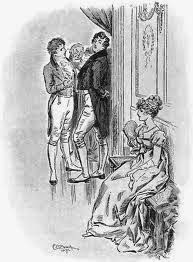
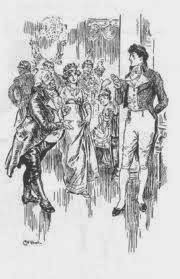


Regency Personalities Series-William Cowper
Regency Personalities Series
In my attempts to provide us with the details of the Regency, today I continue with one of the many period notables.
William Cowper
November 1731 – 25 April 1800
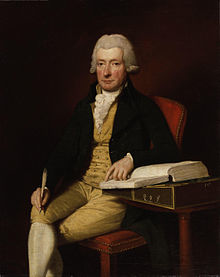
William Cowper
William Cowper was born in Berkhamsted, Hertfordshire, England where his father John Cowper was rector of the Church of St Peter. His mother was Ann Cowper. Only two of the seven children of John and Ann Cowper lived past infancy – William and John. Ann died giving birth to John on November 7, 1737. His mother’s passing troubled him deeply and was the subject of his poem “On the Receipt of My Mother’s Picture,” which was written more than fifty years later. He grew close to her family, however in his early years. He was particularly close with her brother Robert and his wife Harriot. They instilled in young William a love of reading and gave him some of his first books – John Bunyan’s Pilgrim’s Progress and John Gay’s Fables.
Cowper was first enrolled in the Westminster School in April of 1742 after moving from school to school for a number of years. He had begun to study Latin from a young age and was an avid scholar of Latin for the rest of his life. Older children bullied Cowper through many of his younger years. At the Westminster School he studied under the headmaster John Nicoll. At the time the Westminster School was popular amongst families belonging to England’s whig political party. Many of them sent their sons there. Many intelligent boys from families of a lower social status also attended, however. Cowper made lifelong friends attending Westminster. He read through the Illiad and the Odyssey, which ignited his lifelong scholarship and love for Homer’s epics. He grew skilled at the interpretation and translation of Latin and this was a skill that would stay with him for the rest of his life. He was skilled in the composition of Latin as well and wrote many verses of his own.
After education at Westminster School, he was articled to Mr. Chapman, solicitor, of Ely Place, Holborn, to be trained for a career in law. During this time, he spent his leisure at the home of his uncle Bob Cowper, where he fell in love with his cousin Theodora, whom he wished to marry. But as James Croft, who in 1825 first published the poems Cowper addressed to Theodora, wrote, “her father, from an idea that the union of persons so nearly related was improper, refused to accede to the wishes of his daughter and nephew.” This refusal left Cowper distraught.
In 1763 he was offered a Clerkship of Journals in the House of Lords, but broke under the strain of the approaching examination and experienced a period of insanity. At this time he tried three times to commit suicide and was sent to Nathaniel Cotton’s asylum at St. Albans for recovery. His poem beginning “Hatred and vengeance, my eternal portions” (sometimes referred to as “Sapphics”) was written in the aftermath of his suicide attempt.
After recovering, he settled at Huntingdon with a retired clergyman named Morley Unwin and his wife Mary. Cowper grew to be on such good terms with the Unwin family that he went to live in their house, and moved with them to Olney, where John Newton, a former slave trader who had repented and devoted his life to the gospel, was curate. Not long afterwards, Morley Unwin was killed in a fall from his horse, but Cowper continued to live in the Unwin home and became greatly attached to Mary Unwin.
At Olney, Newton invited Cowper to contribute to a hymnbook that he was compiling. The resulting volume known as Olney Hymns was not published until 1779 but includes hymns such as “Praise for the Fountain Opened” (beginning “There is a fountain fill’d with blood”) and “Light Shining out of Darkness” (beginning “God Moves in a Mysterious Way”) which remain some of Cowper’s most familiar verses. Several of Cowper’s hymns, as well as others originally published in the “Olney Hymns,” are today preserved in the Sacred Harp.
In 1773, Cowper experienced an attack of insanity, imagining not only that he was eternally condemned to hell, but that God was commanding him to make a sacrifice of his own life. Mary Unwin took care of him with great devotion and after a year he began again to recover. In 1779, after Newton had left Olney to go to London, Cowper started to write further poetry. Mary Unwin, wanting to keep Cowper’s mind occupied, suggested that he write on the subject of The Progress of Error, and after writing his satire of this name he wrote seven others. All of them were published in 1782 under the title Poems by William Cowper, of the Inner Temple, Esq..
The year before this publication, Cowper met a sophisticated and charming widow named Lady Austen who served as a new impetus to his poetry. Cowper himself tells of the genesis of what some have considered his most substantial work, The Task, in his “Advertisement” to the original edition of 1785:
“…a lady, fond of blank verse, demanded a poem of that kind from the author, and gave him the SOFA for a subject. He obeyed; and, having much leisure, connected another subject with it; and, pursuing the train of thought to which his situation and turn of mind led him, brought forth at length, instead of the trifle which he at first intended, a serious affair—a Volume!”
In the same volume Cowper also printed “The Diverting History of John Gilpin”, a notable piece of comic verse. John Gilpin was later credited with saving Cowper from turning completely insane.
Cowper and Mary Unwin moved to Weston in 1786 and shortly before this became close with his cousin Harriet (Theodora’s sister), now Lady Hesketh. During this period he started his translations of Homer’s Iliad and Odyssey into blank verse, and his versions (published in 1791) were the most significant English renderings of these epic poems since those of Alexander Pope earlier in the century, although later critics have faulted Cowper’s Homer for being too much in the mould of John Milton.
In 1795 Cowper moved with Mary to Norfolk. They originally stayed at North Tuddenham, then at Dunham Lodge near Swaffham and then Mundesley before finally settling in East Dereham.
Mary Unwin died in 1796, plunging Cowper into a gloom from which he never fully recovered. He did, however, continue revising his Homer for a second edition of his translation, and, aside from writing the powerful and bleak poem “The Castaway”, penned some English translations of Greek verse and turned some of the Fables of John Gay into Latin.
Cowper was seized with dropsy in the spring of 1800 and died. He is buried in the chapel of St. Thomas of Canterbury, St. Nicholas Church, East Dereham. A window in Westminster Abbey honours him.




